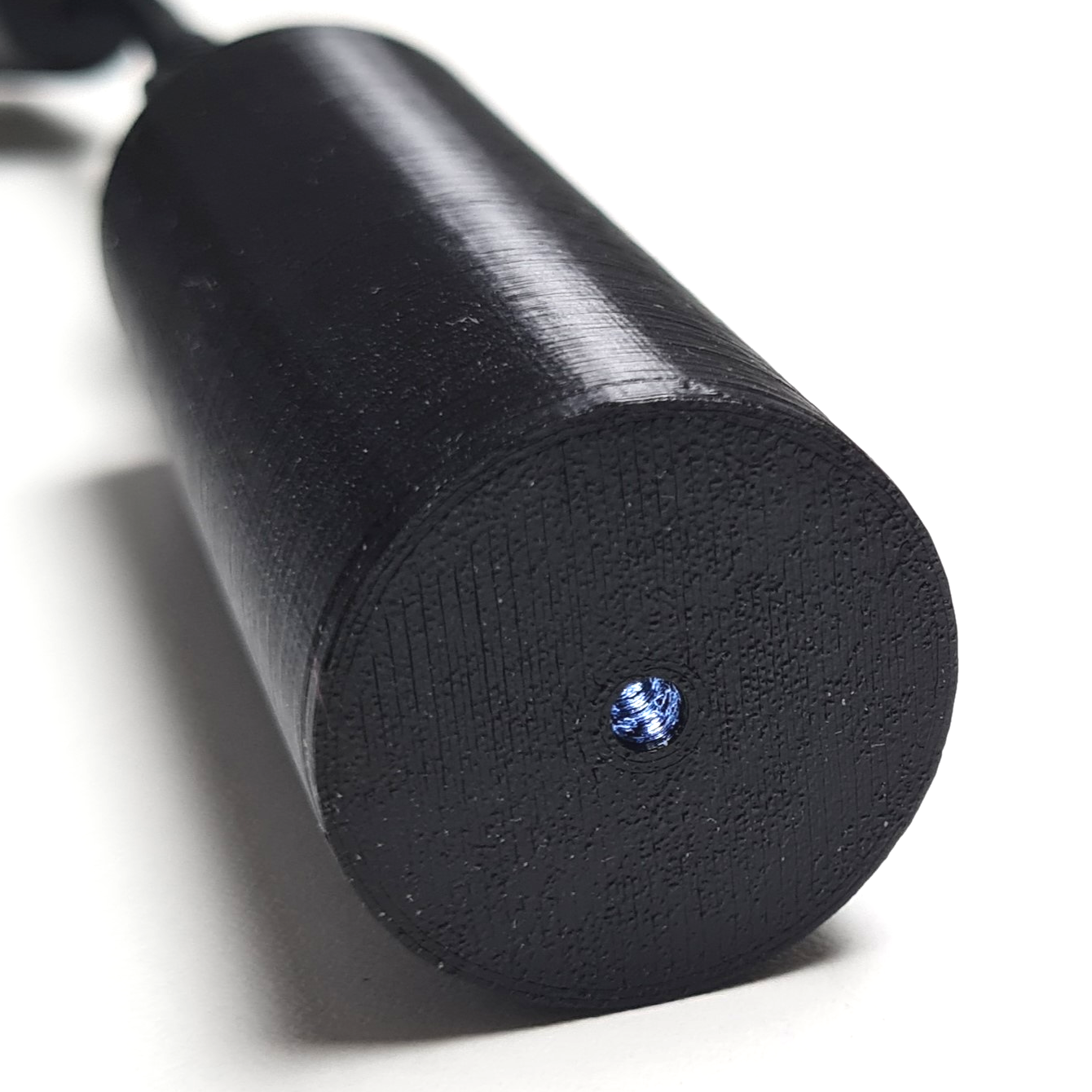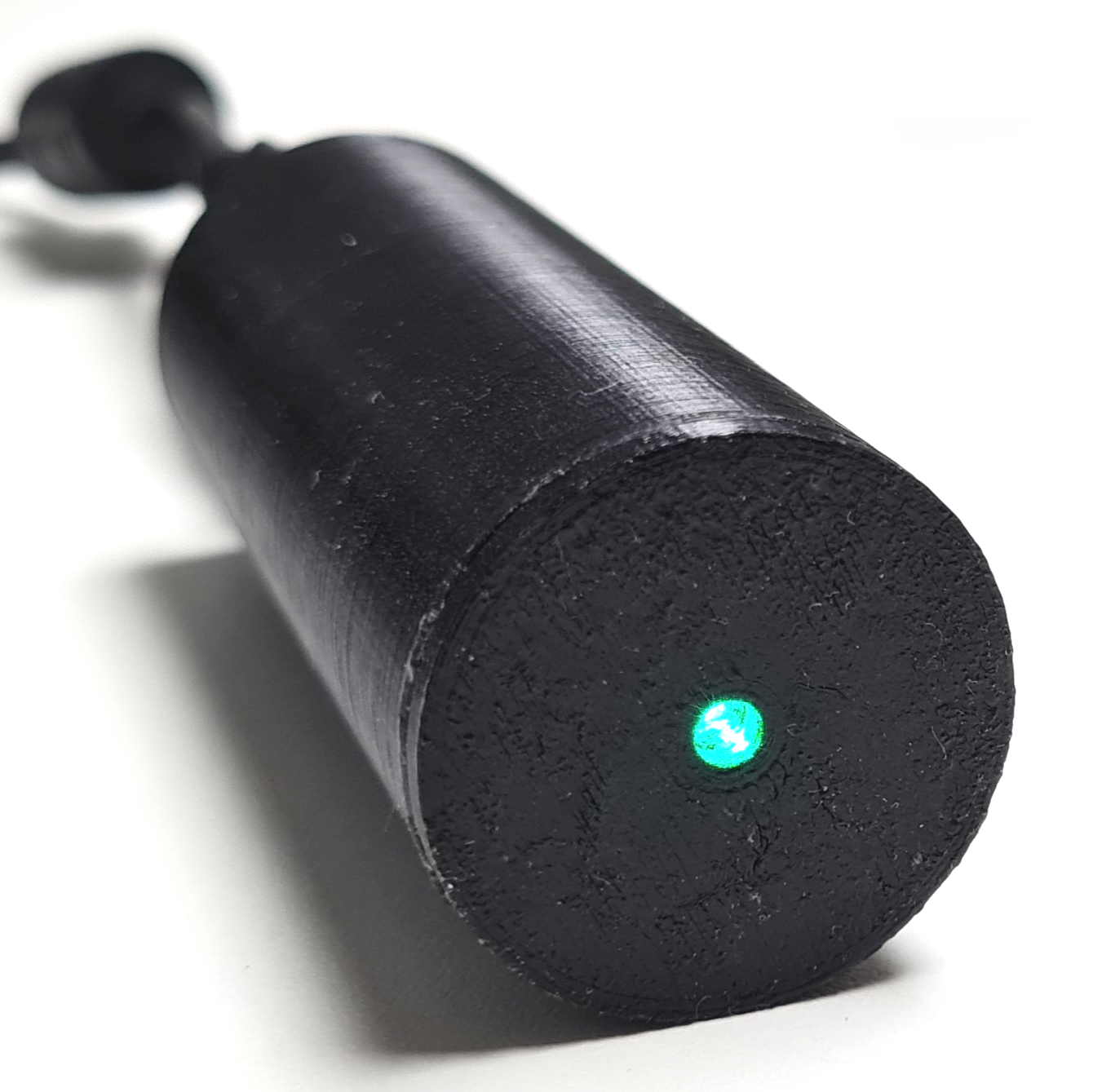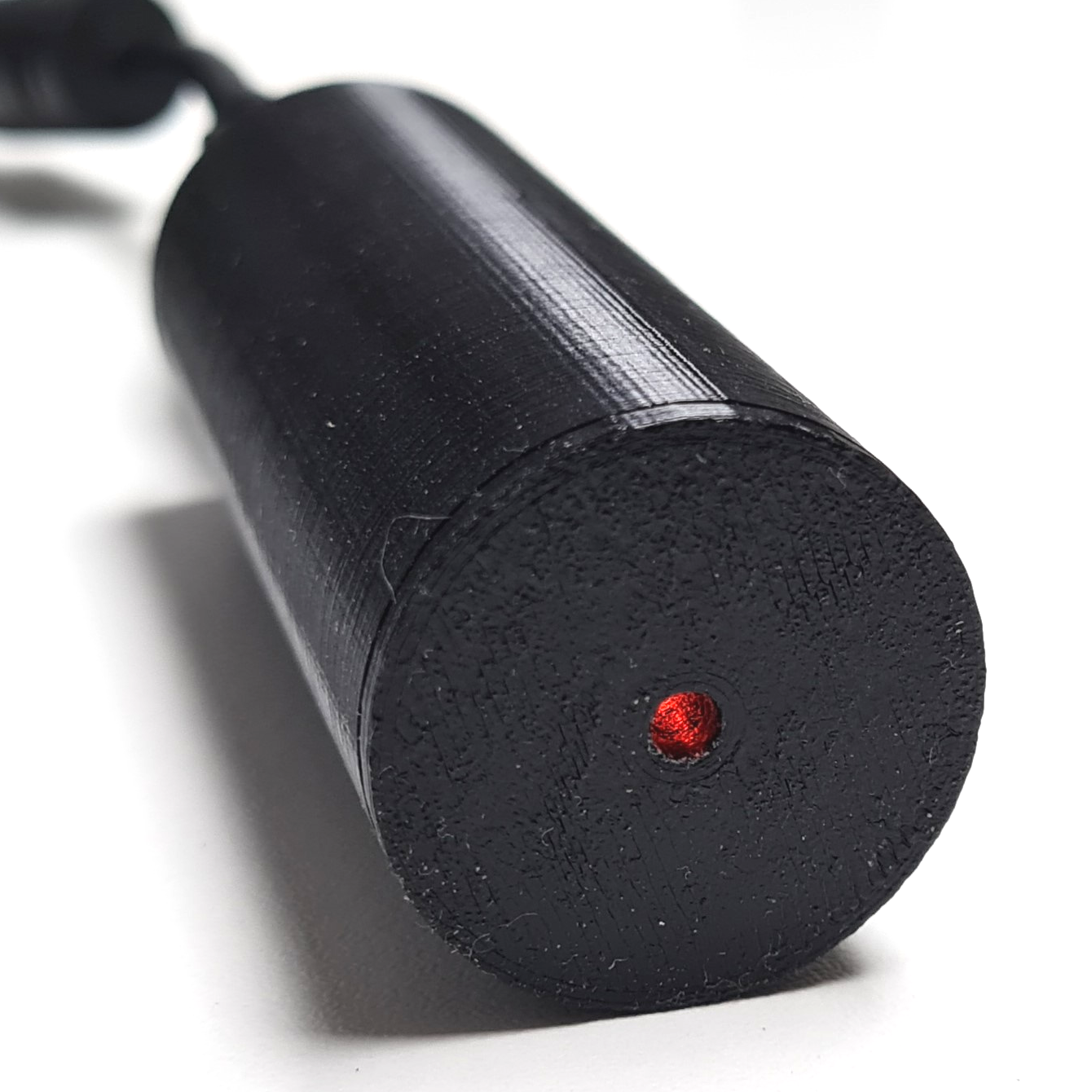


In order to calibrate spectrometers which can be built with our optoelectronics kit – such as the Czerny-Turner spectrometers – modules have proven themselves in which the light guides of the spectrometer can be plugged in and which contain the respective light source. In this way, the light sources can be changed quickly and the individual adjustment steps can be carried out one after the other.
It has proven useful to construct the alignment aid as a simple cylinder made of PLA filament using a 3D printer. A module consists of a sleeve with a suitable diameter and length to accommodate the light source plus any control electronics. A front cover, which can be attached to the sleeve and glued if required, contains a central hole or plug-in opening for the light guide. In addition, there is a rear cover with an opening for a USB socket, whereby the module can be supplied with a conventional USB plug-in power supply.
As with all of our application examples, we strive to provide the appropriate instructions, guidance on obtaining the necessary components, and the free CAD files for the 3D printed parts on our web pages in a timely manner.
There is hardly any limit to creativity when setting up such adjustment aids, as there are now a large number of inexpensive light sources that are easy to obtain and can be controlled using 5 V. Depending on the application or the measurement setup to be adjusted, you can quickly build the required versions. In the following we describe three modules which are particularly helpful for the adjustment of a spectrometer.
With the help of a bright white light LED, the rough adjustment of a spectrometer can be done easily and quickly. On one hand, the beam path can be easily followed in the setup by using a white sheet of paper as a projection screen and, on the other hand, the angles of the optical components to each other can be adjusted so that the desired spectral section is located at the best possible position of the sensor.

In the meantime, there is a large selection of inexpensive high-power LEDs that have a high color temperature and thus also contain clearly visible components in the blue spectral range. For the appropriate power supply, there are small and inexpensive regulator boards that provide the regulated LED current from the 5 V of the USB port. If the LED is bright enough, the adjustment can even be done in daylight.
Laser diodes are particularly suitable for fine adjustment of spectrometers by adjusting the position of the mirrors or lenses in such a way that the width of the laser line in the sensor signal is as small as possible. There are now inexpensive ready-made small diode laser modules that already contain the necessary laser driver and can also be operated with 5 V from the USB port. Common easily obtainable models have wavelengths of 635 or 520 nm, but also modules with 415 nm are affordable meanwhile.

These laser modules often also have a colimation optics to generate e. g. a laser dot or a laser line. This optic is either removed for use as an alignment aid, or taped off with some matte tape to create a diffuse output beam which then couples into the light guide.
Finally, neon glow lamps are ideally suited for the spectral calibration of spectrometers. The light they emit has narrow emission lines with a fixed wavelength. However, glow lamps require voltages of > 110 V for their operation. However, inexpensive inverters are available for their generation, which are used for the operation of electroluminescence foils. Because of the high voltage, it is essential to follow the safety instructions for the inverters used!

More detailed information about the spectra of glow lamps can be found in our corresponding application example. How to calibrate a spectrometer using a neon glow lamp is described in the documentation of our Python program EasyCalibrate.
You will also find this information handy for printing in this PDF.
Here you can easily ask a question or inquiry about our products:
Last update: 2023-04-09
